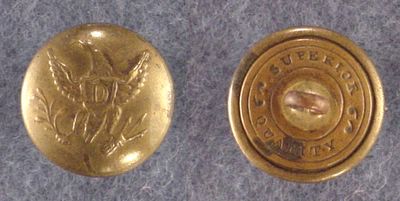"SUPERIOR QUALITY" For Buttons Lacks Secondary Meaning, Says TTAB
Despite its claim of 169 years of use, Applicant OGS Technologies (formerly known as The Waterbury Button Company) failed to establish secondary meaning for its mark SUPERIOR QUALITY for "buttons for clothes." In re OGS Technologies, Inc., Serial No. 76301434 (June 8, 2005) [not citable].

Relying on dictionary definitions and on numerous Internet excerpts showing third party use of "superior quality" to refer to clothing, buttons, fabric, and other notions, the Examining Attorney contended that the mark is "highly laudatory/highly descriptive, thus requiring a higher burden of applicant in proving acquired distinctiveness" -- a Section 2(f) burden that OGS failed to carry.
OGS claimed use of the mark since 1833, annual sales of more than $600,000 for the years 1998-2002, and advertising expenditures of more than $60,000 per annum. It submitted a list of Google hits, Internet website printouts from those hits, and four unverified customer statements (on OGS letterhead). And it claimed that its buttons are "well known among collectors and some of [the] buttons sell for hundreds and thousands of dollars each."
The Examining Attorney countered by pointing out that OGS "submitted no advertisements, no brochures, no catalogs, and no other promotional materials," and asserted that the Internet excerpts show that the phrase SUPERIOR QUALITY is a "back mark" denoting quality and does not indicate source.

The Board agreed with the PTO that SUPERIOR QUALITY is "highly laudatory/highly descriptive and is used to refer to the quality of these various items." The Board likewise agreed that the level of evidence necessary to establish secondary meaning is consequently "extremely high," and it concluded that OGS's evidence was not sufficient.
"Despite applicant's claim that the term was first used for buttons for clothing in 1833, there is a lack of evidence of recognition by the purchasing public now. Our determination of whether SUPERIOR QUALITY has acquired distinctiveness is based on the perception of the purchasing public today."
The Board found OGS's sales figures "not particularly large" and its advertising expenditures "likewise limited in amount." Moreover, OGS failed to place those figures in context vis-a-vis the total market for buttons. "[G]iven the high degree of descriptiveness of the term, a more substantial showing of sales and advertising figures would be required to establish acquired distinctiveness."
The Board noted the lack of advertising and promotional evidence, and it found the four customers statements (which provided little information) to be of "limited probative value." OGS's website evidence showed "mixed uses": not all the Google hits referred to Applicant, nor did they all depict "superior quality" in capital letters. And some may refer to the condition or quality of the button and may not necessarily indicate a trademark. Finally, the fact that Applicant's buttons are well know to collectors is irrelevant to the Section 2(f) issue:
"Moreover, even if collectors of Civil War era (and other such) buttons may regard SUPERIOR QUALITY as a trademark for buttons used at the time of the Civil War, nonetheless, there is no evidence that consumers regard SUPERIOR QUALITY as a trademark for buttons today."
Therefore the Board affirmed the refusal to register under Section 2(e)(1) and the rejection of OGS's Section 2(f) claim.
Text Copyright John L. Welch 2005. All Rights Reserved.




0 Comments:
Post a Comment
<< Home